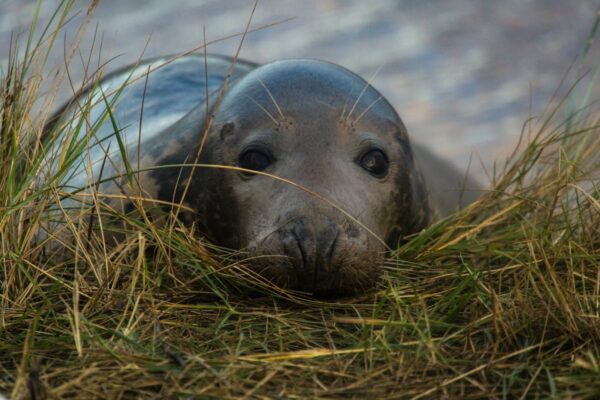Toxic chemicals in UK whales and dolphins are exceeding safe limits. The compounds, once used in pesticides, flame retardants and coolants, are having significant impacts on the health and reproduction of the animals.
Despite many being banned almost 20 years ago, levels of persistent organic pollutants (POPs) remain high in the oceans. In fact, these chemicals may breach safe limits in as many as half of all marine mammals living around the UK, based on a new study of stranded animals and reported by the Natural History Museum.
While the researchers found that levels of six key POPs are declining, they’re concerned that the chemicals currently contained in coastal landfill sites could increasingly leak out as flooding, extreme weather and coastal erosion are enhanced by climate change.
Dr Rosie Williams, the lead author of the study at the Zoological Society of London, says, ‘This is a huge wake-up call. It’s been over 20 years since several of these chemicals were banned globally, yet we still see concerningly high concentrations in wildlife.’
‘We need to act now, learn from our past mistakes and employ stronger, science-backed measures to curb pollution. Ambitious and urgent action is required and by beginning today we can start mitigating the profound impact that chemical pollution continues to have on marine life.’
The findings of the research were published in the journal Environmental Science & Technology.
Photo by Diana Parkhouse
The problem with POPs
Many POPs were first developed in the twentieth century as part of a new wave of synthetic chemicals. At the time, they were seen as ground-breaking new compounds which could be used in stronger pesticides, longer lasting paint, and more fire-resistant furniture.
However, the same properties that made these chemicals so useful came at a cost: they are highly toxic and do not easily break down in nature. Over time, these chemicals leached into our soil, air and rivers, eventually making their way into the ocean.
‘These toxins are initially taken up by plankton at the bottom of the food chain,’ Rosie explains. ‘Unable to be broken down or excreted, these persistent chemicals increase in concentration the further up the food chain they go in a process known as biomagnification.’
‘As apex predators, many marine mammal species consume large amounts of toxins every time they feed, making them some of the most contaminated wildlife species.’
While the effects of these chemicals vary, they are unfailingly harmful. As they build up in the body’s fats, they can damage the reproductive system, the immune system, and hormonal cycles.
When this was recognised in the 1970s, countries began to introduce rules on their use. However, it wasn’t until 2004 that the Stockholm convention came into force which bans or restricts the production and use of the most damaging compounds.
Despite this, the staying power of these chemicals means that marine mammals will remain vulnerable to their impacts for many years to come. Though no death of a marine mammal has ever been directly linked to pollution, the chemicals continue to provide another threat to animals already under pressure from fishing bycatch, noise pollution and climate change.
Every year hundreds of marine mammals end up dying after becoming stranded on the coast of the UK. Many of these animals are reported to the UK’s Cetacean Strandings Investigation Programme, who investigate the events which led up to their death.
As a result of this work, the team have toxicology samples dating back more than 30 years. This is allowing researchers to reveal what impact the pollutants are still having on marine mammals.
What did the strandings data reveal?
One of the clearest examples of the effect these chemicals can be found off the north coast of Scotland. The UK’s only resident orca population lives here, a group of four males and four females.
‘Orcas are probably at greater risk than other species because they eat seals, which are already very contaminated in their own right, and because they live for a long time.’
In fact, PCBs were the most abundant POP found in the study. From 2014 to 2018, 48% of animals had levels of this chemical higher than the point where it starts to have noticeable effects on hormones and the immune system.
A cleaner future?
While the findings present a concerning future for the UK’s marine mammals, there were a few reasons for hope. Though levels of POPs remain high in the oceans, their concentration in wildlife appears to be in decline.
Despite this progress, the scientists remain concerned that leaks of existing POPs and newly developed chemicals could set this progress back. ‘The global costs associated with environmental chemical exposure, such as medical treatment, has been estimated to be around 10% of the entire world’s GDP,’ Rosie says. ‘This means there’s a huge economic incentive to address this problem now.’
The full story can be read on the Natural History Museum site here.
